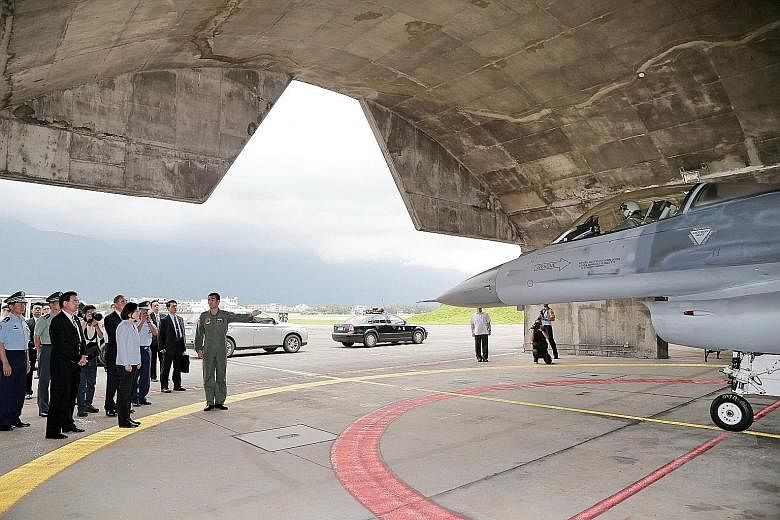Taiwan is putting some flesh on the bones of President Tsai Ing-wen's New Southbound Policy - key to her determination to wean the island's economy off China.
The push to strengthen links with South-east Asia and India will take the form of not just traditional investments and trade, but also what Mr James Huang terms a "people-centric" economic strategy.
Specifically, this would include wooing students and tourists from the region, the former foreign minister now in charge of the agency spearheading the policy told Taiwan's media. Underscoring the importance given to the agency, it is housed under the Presidential Office and will be supported by a new think-tank.
China is Taiwan's largest trading partner, with two-way trade valued at around US$130 billion (S$179 billion), almost double that of the island's trade with Asean, amounting to US$79 billion last year. Taiwan's trade with India is even less - at US$6 billion in 2014.
The Education Ministry is submitting a report to the legislature, outlining plans to promote exchanges in learning and "innovative teaching" between higher education institutes in Taiwan and South-east Asia, reported the Central News Agency.
For instance, it intends to provide more scholarships and internship programmes to attract non-Chinese students. Currently, there are about 5,000 students from South- east Asia, India, New Zealand and Australia, a quarter of all overseas students in Taiwan. Chinese students number around 10,000.
Separately, there will be a drive to diversify the sources of tourists to Taiwan. A visa-waiver scheme for South-east Asians is on the cards. So are plans to attract more Muslim visitors, such as by making hotels friendlier to their needs, including by providing halal food. Malaysians, Indonesians and Filipinos now make up the majority of the 200,000 Muslim tourists annually.
Tourism is a key driver of Taiwan's services sector, largely propelled by the four million Chinese tourists who visit annually. But since the Jan 16 presidential and legislative polls, which saw Ms Tsai and her pro-independence Democratic Progressive Party romp to victory, China has tightened the tap on the flow of its tourists to the island, forcing Taiwan to look elsewhere.
Meanwhile, attracting more South-east Asian students to study - and eventually work - in Taiwan may reap long-term dividends, with Taiwan companies targeting the Asean market even as the Chinese economy slows.
National Development Council Deputy Minister Kao Shien-quey tells The Straits Times: "These students will become the front-liners in our companies' efforts to move into South-east Asia."
They will help Taiwan counter a key challenge, a lack of knowledge about the region, she says. "We know little about South-east Asia and have not done much in-depth research into it."
There remains scepticism in Taiwan as to the extent the New Southbound Policy can succeed.
Tour agency owner Arthur Li, who says bookings by Chinese tourists have dropped by between 30 and 50 per cent since January, reckons the low-hanging fruit in South-east Asia have already been plucked. Many Singaporeans and Malaysians visit Taiwan.
"But I don't think other countries, such as Thailand, Indonesia or Vietnam, will be interested in coming because Taiwan is relatively more expensive.
"Also, due to the differences in culture and history, will they be interested in our tourist spots, such as the National Palace Museum?"
Acknowledging these issues, Ms Kao says there are many kinks to iron out for the policy to succeed.
"The main thing is to regain autonomy of our economy and not over-rely on one market.
"There are many areas we need to look at for that to happen. But at this point, we need to signal our change in policy."

